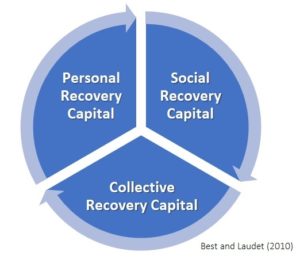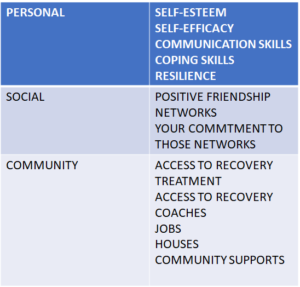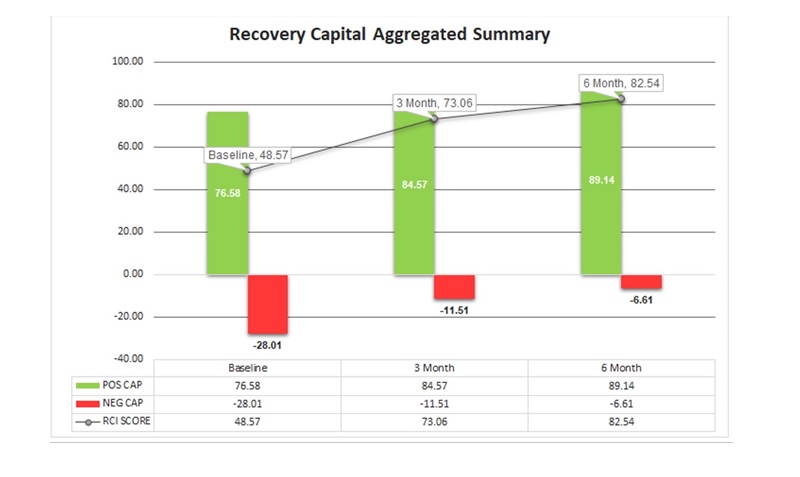Building Recovery Capital to Overcome Addiction


What is Recovery Capital?
Recovery capital is the bank account of recovery. The aim is to build up the savings and get rid of the debts.
And then use the savings to invest in your recovery future and in doing so build more savings for those you and your family care about
But the bank account here is not for money – it is relationships, skills, love, support, belonging, trust and hope
Research has shifted from the pathology and short-term addiction treatment modalities to include more focused attention to recovery. The combination of personal, interpersonal and community resources that can be drawn upon to begin and sustain addiction recovery. These characteristics have been termed ‘Recovery Capital’, defined by Granfield and Cloud as “The breadth and depth of internal and external resources that can be drawn upon to initiate and sustain recovery from alcohol and other drug problems” 1999.
 Recovery Capital is not a fixed value, it diminishes during active addiction and increases during sustained recovery. Recovery Capital may be grouped in four categories – internal: human and physical; and external: social and cultural.
Recovery Capital is not a fixed value, it diminishes during active addiction and increases during sustained recovery. Recovery Capital may be grouped in four categories – internal: human and physical; and external: social and cultural.
Human and Physical – includes housing, employment, nutrition, education, personal resources, mental, spiritual and emotional health, knowledge, coping, well being, mindfulness, physical fitness, financial responsibility
Social and Cultural – encompasses community attitudes and recovery supports; policymaker knowledge and policies and resources related to recovery; active efforts to reduce stigma; visible and diverse recovery role models, accessible sources of sustained recovery supports, recovery peer resources and early intervention; beliefs, sense of personal choice social integration, connection to purpose; availability of multiple pathways to recovery, community assets, Recovery-focused systems of care.
Recovery Capital interacts with problem severity to shape the intensity and duration of support needed to initiate and sustain recovery. Re-evaluation of Recovery Capital during the recovery journey may be used to determine the quality and even the duration of successful sustained recovery from addiction
What is My Recovery Plan
Electronic Healthcare Record (EHR)
- Software that tracks a person’s recovery pathway assessing external and internal resources.
- Assessment Tool
- Recovery Management Tool
My Recovery Plan supports increasing Recovery Capital using the REC CAP Assessment Tool, a strengths-based approach that measures the seven domains of Recovery Capital. My Recovery Plan will provide a view on how Recovery Capital Scores increase over time and also provide reports on what interventions are providing better health outcomes.

Recovery Capital Domains
Negative Recovery Capital (-100)
- Unmet Needs (-50)
- Barriers to Recovery (-50)
Positive Recovery Capital (+100)
- Personal Capital (20)
- Social Capital (20)
- Community Capital (20)
- Commitment to Recovery (20)
- Quality of Life and Satisfaction (20)
Evidence shows, that a deficiency in one or more domains (ie: social detriments of health) hampers the recovery process and desired better health outcomes (ie: quality of life indicators).
Assessment Questionnaire Measures
1. Substance use and abstinence
2. Mental wellness and spirituality
3. Physical and medical health
4. Citizenship and community involvement
5. Meaningful activities: job/career, education, recreation, support
6. Relationships and social networks
7. Housing and safety
8. Risk-taking and independence from legal responsibilities and institutions
9. Coping and life functioning
10. Recovery experience
How to Build Recovery Capital for Each Category
Social Category
Key Questions
-
- What kinds of support are available from family, social networks, and community affiliations?
- What are the participant’s obligations to these entities?
Examples
-
- Family and kinship networks
- Friendships
- Support groups
- Community affiliations
Physical Category
Key Questions
-
- What tangible assets (e.g., property, money, job, etc.) are available to expand the participant’s recovery options?
Examples
-
- Money
- Personal property
- Job
- Home
Human Category
Keys Questions
-
- What intangible assets (skills, aspirations, personal resources, etc.) will enable the participant to flourish in recovery?
Examples
-
- Skills and talents
- Education
- Dreams and aspirations
- Personal resources
Cultural Category
Key Questions
-
- What network of values, principles, beliefs, and attitudes will serve to support the participant’s recovery?
Examples
-
- Access to cultural activities
- Connection to cultural institutions
- Belief systems and rituals
Increasing Recovery Capital
Help the individual assess their Recovery Capital
- Identify areas that are ‘high’ that can be relied on
- Identify areas that are ‘low’ and can be built up
- Prioritize and select (focus on one or two)
Define and complete specific tasks that will help build up the areas selected
Re‐assess:
- Are the specific areas improving?
- Is overall Recovery Capital growing?
- What to focus on next?
Bridging to Communities of Recovery
There are several scientifically and clinically grounded findings and principles that should guide the linkage of clients to recovery support groups. There are three primary goals
- To solidify recovery initiation
- To connect each individual/family to a community of recovered and recovering people with whom they can engage with
- To provide communal guidance for the transition from recovery initiation/stabilization to long-term recovery maintenance
Essential Ingredients for Sustained Recovery
- Safe and affordable housing
- Steady employment and job readiness
- Education and vocational skills
- Life and recovery skills
- Health and wellness
- Recovery support networks
- Sense of belonging and purpose
- Community engagement
Service System Progression
- Clinicians are considered Navigators of the My Recovery Plan, mentoring clients though their recovery journey
- Navigators Identify opportunities for new collaborations across sectors, within communities, and with clients and their families
- Review current services to identify strengths, gaps and opportunities to implement additional and higher-quality recovery-focused policies and practices.
- Provide multiple treatment options and supports for clients

